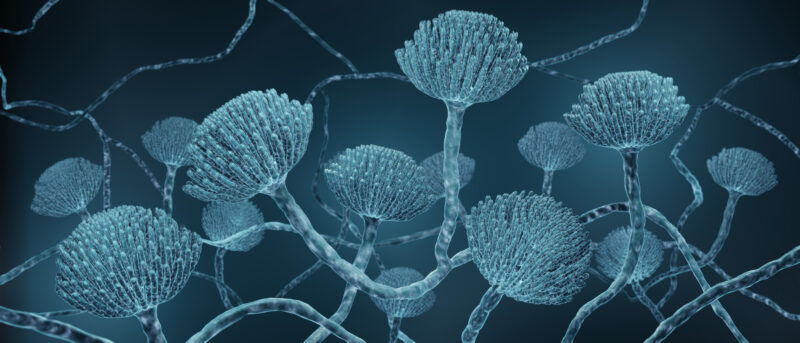Twin sisters: DNA damage and cancer
Understanding the complex links between cancer, longevity and aging is one of the most important topics that modern medicine is eagerly exploring, and its application has a place in every person’s life. In general terms, cancer is a disease caused by the uncontrolled growth of cells. The mutations necessary for the development of cancer usually occur as a result of DNA damage. This DNA damage is caused by intracellular and environmental factors. Factors such as exposure to light, chemicals, air pollution and radiation can cause DNA damage. With aging, cells are also more likely to suffer DNA damage. DNA damage is a constant source of stress for cells. This permanent damage over time increases the risk of mutations and leads to the accumulation of mutations with the aging process. Failure to repair DNA damage effectively can accelerate the signs of aging and increase the risk of cancer. This balance is determined by the response of cells to DNA damage. Mutations in DNA repair mechanisms lead to high mutation levels and often cause excessive cell death and depletion of stem cells, which can lead to premature aging. Stem cells have distinct properties that have the ability to maintain low mutation rates. But when mutations occur, clonal expansion of stem cells can contribute to age-related tissue dysfunctions and increased cancer risk.
Let’s first examine the increased accumulation of DNA damage and mutations associated with both aging and cancer. We will also consider whether anti-aging interventions can prevent cancer and through which mechanisms this effect can be achieved.

Does it work the same for everyone?
Aging and cancer are inevitable facts of human life. These two complex processes are interrelated in many ways and share many similar properties at the molecular level. But how is this interesting and critical link between aging and cancer? There is one important factor at the center of both processes: DNA damage. Inside our cells, we are exposed to a lifelong series of stressors. These stresses can damage DNA and lead to the accumulation of damage. Accumulated DNA damage increases the risk of mutations, and the older we get, the more mutations accumulate in our cells. This is one of the key molecular hallmarks of aging. But this link is not limited to aging. DNA damage is one of the main triggers of cancer. Genetic changes in cells can lead to the onset of cancer. In other words, DNA damage accumulated during the aging process can increase the risk of cancer. However, this relationship is not entirely clear. Why do some older people develop cancer while others are protected? This is where genes and environmental factors come into play. The cellular response to DNA damage determines the balance between aging and cancer risk. For example, genetic factors that help some individuals repair DNA damage more effectively may reduce cancer risk.
The suggestion that anti-aging interventions can prevent cancer has long been the subject of research. Such interventions aim to slow down aging and increase the DNA repair capacity of cells. If these interventions are successful, the risk of cancer may be reduced. But first, we need to better understand the molecular mechanisms behind these two complex processes. Which genes and proteins make this link between aging and cancer? Which environmental factors increase the risk? The answers to these questions could lead to major advances in the fight against aging and cancer.
References:
Spector NH, Jovanova-Nesic K, Gertz AM. Aging, cancer, and longevity: the uncertain road. Curr Aging Sci. 2013 Feb;6(1):86-91. doi: 10.2174/1874609811306010011. PMID: 23895525.
Stead ER, Bjedov I. Balancing DNA repair to prevent ageing and cancer. Exp Cell Res. 2021 Aug 15;405(2):112679. doi: 10.1016/j.yexcr.2021.112679. Epub 2021 Jun 5. PMID: 34102225; PMCID: PMC8361780.
Gorbunova V, Seluanov A, Zhang Z, Gladyshev VN, Vijg J. Comparative genetics of longevity and cancer: insights from long-lived rodents. Nat Rev Genet. 2014 Aug;15(8):531-40. doi: 10.1038/nrg3728. Epub 2014 Jul 1. PMID: 24981598; PMCID: PMC4353926.
Franceschi C, Monti D, Cossarizza A, Fagnoni F, Passeri G, Sansoni P. Aging, longevity, and cancer: studies in Down’s syndrome and centenarians. Ann N Y Acad Sci. 1991;621:428-40. doi: 10.1111/j.1749-6632.1991.tb16997.x. PMID: 1830464.
Bonafè M, Barbi C, Storci G, Salvioli S, Capri M, Olivieri F, Valensin S, Monti D, Gonos ES, De Benedictis G, Franceschi C. What studies on human longevity tell us about the risk for cancer in the oldest old: data and hypotheses on the genetics and immunology of centenarians. Exp Gerontol. 2002 Oct-Nov;37(10-11):1263-71. doi: 10.1016/s0531-5565(02)00137-7. PMID: 12470840.





